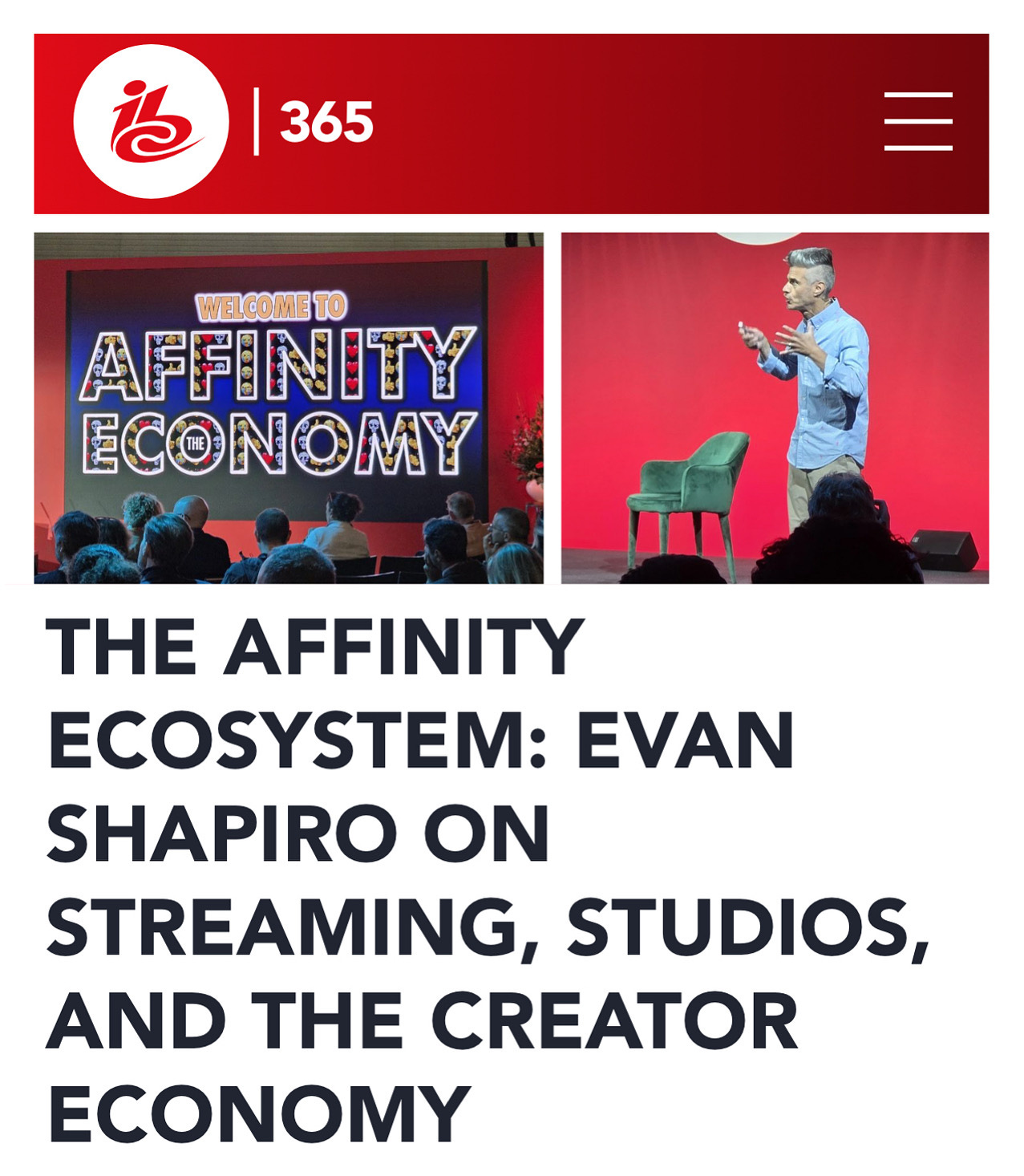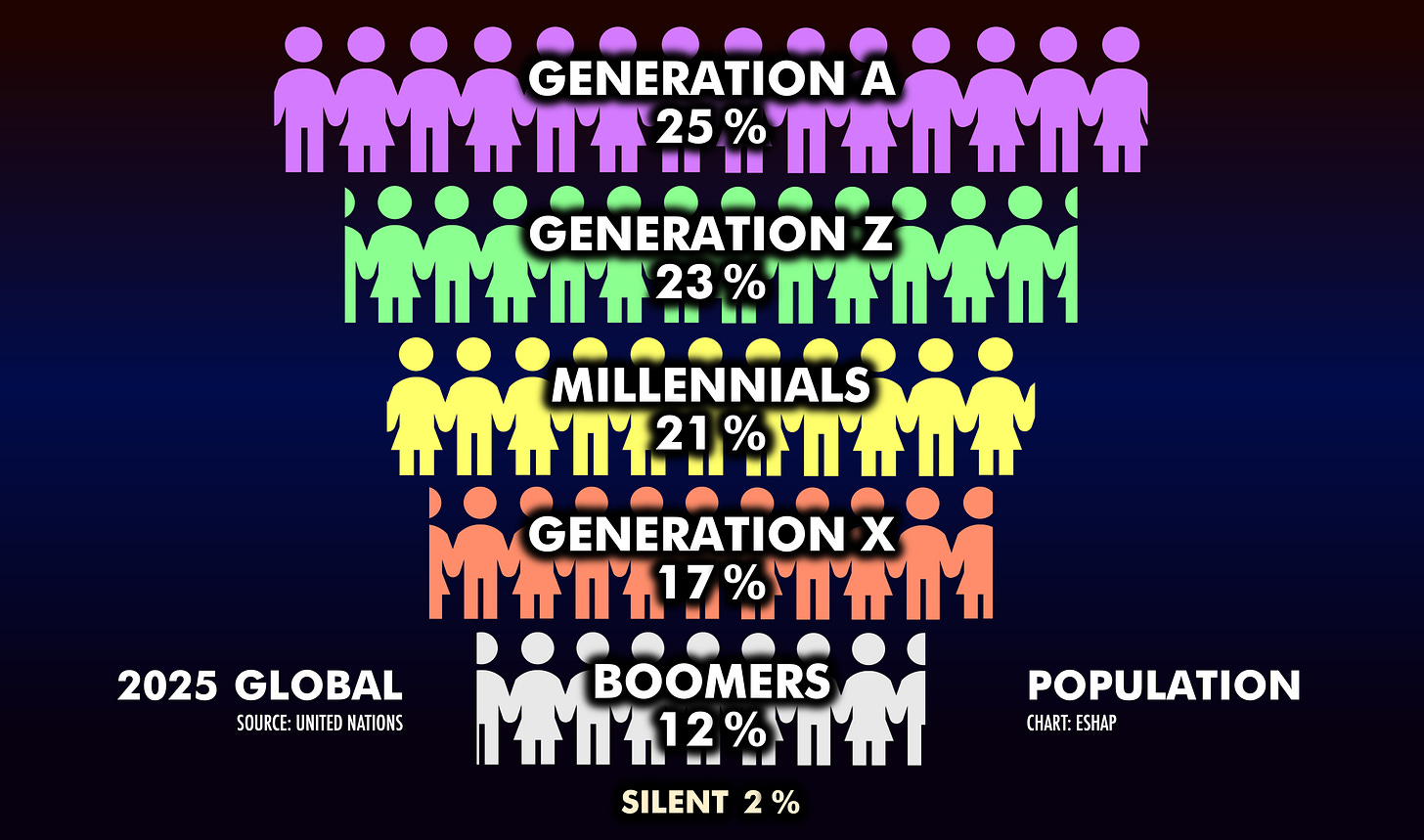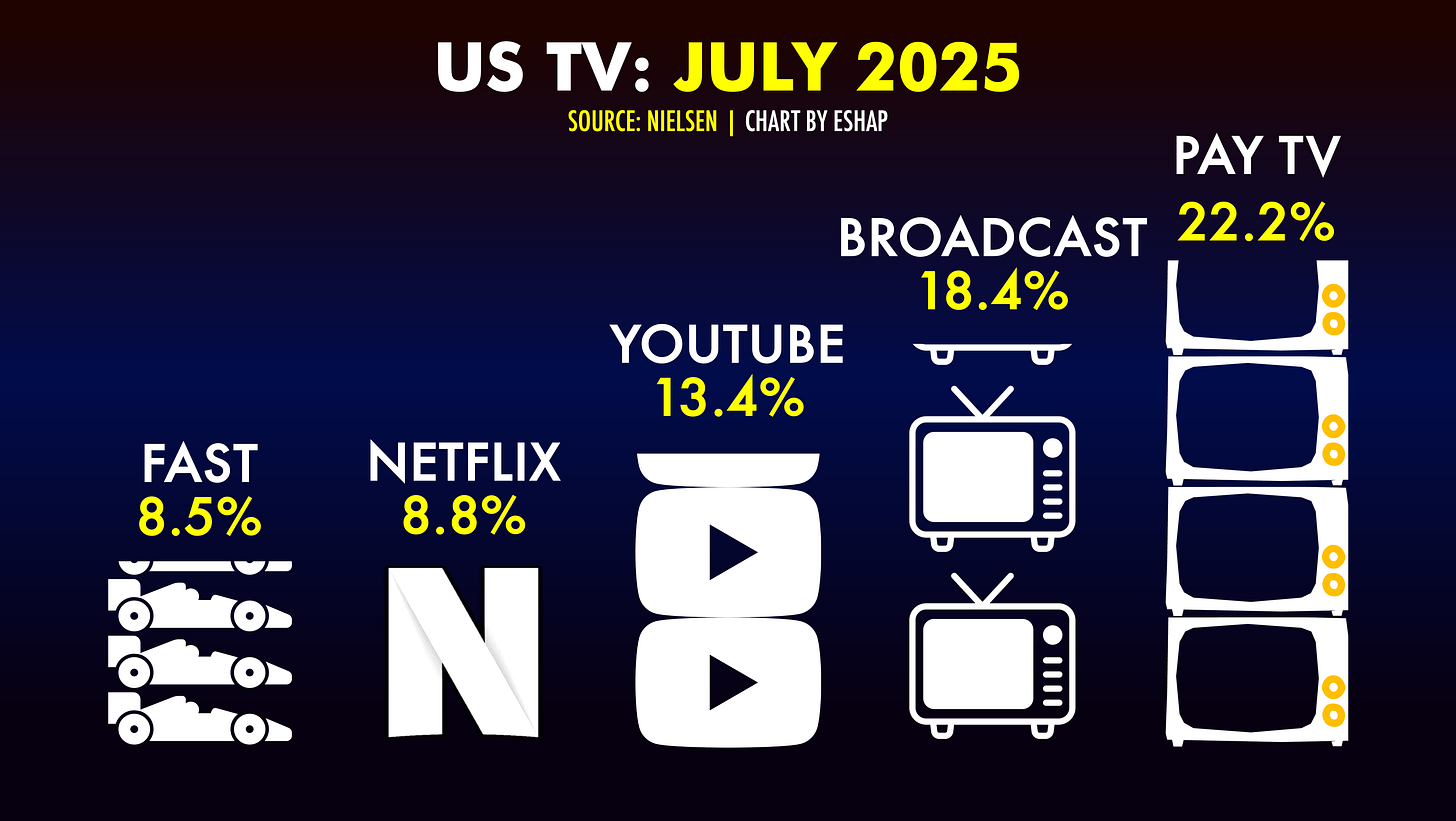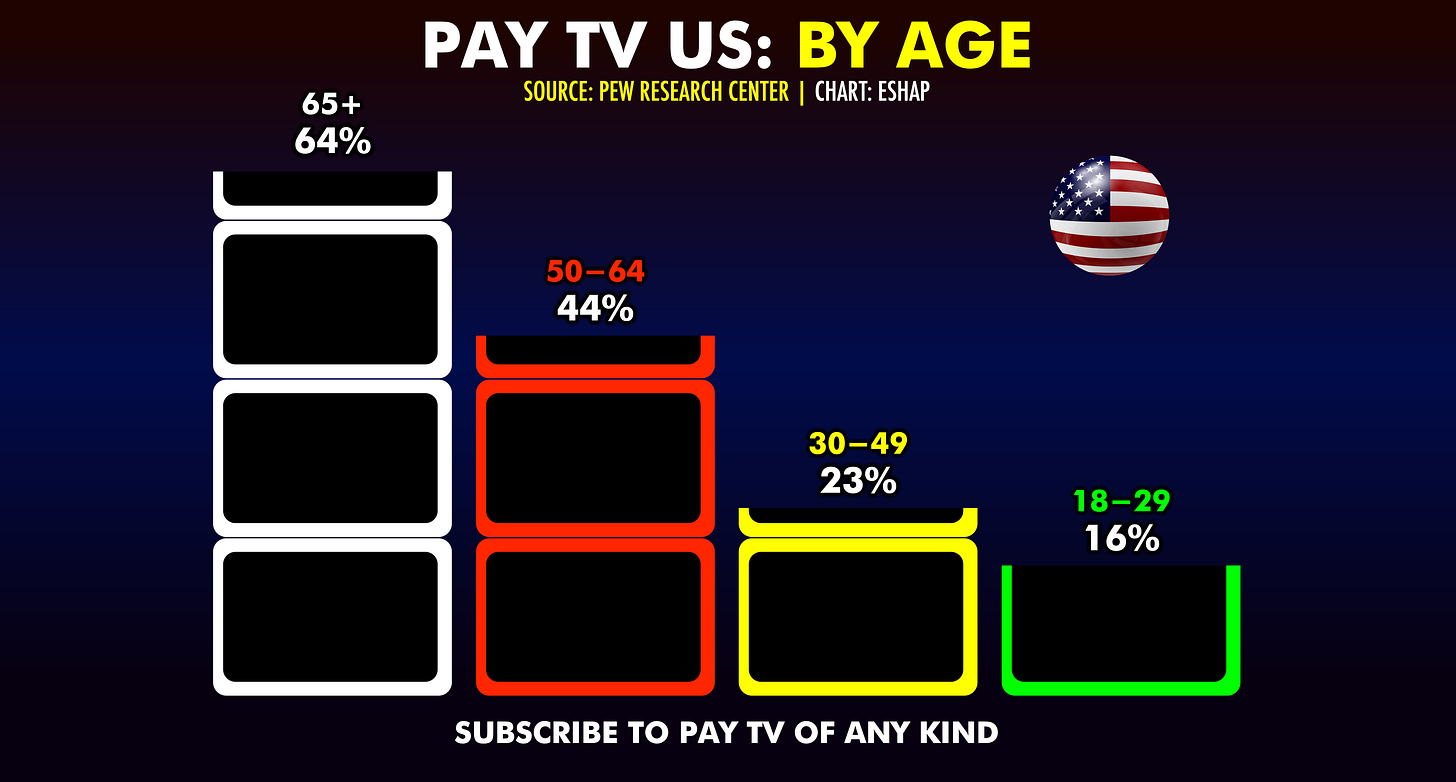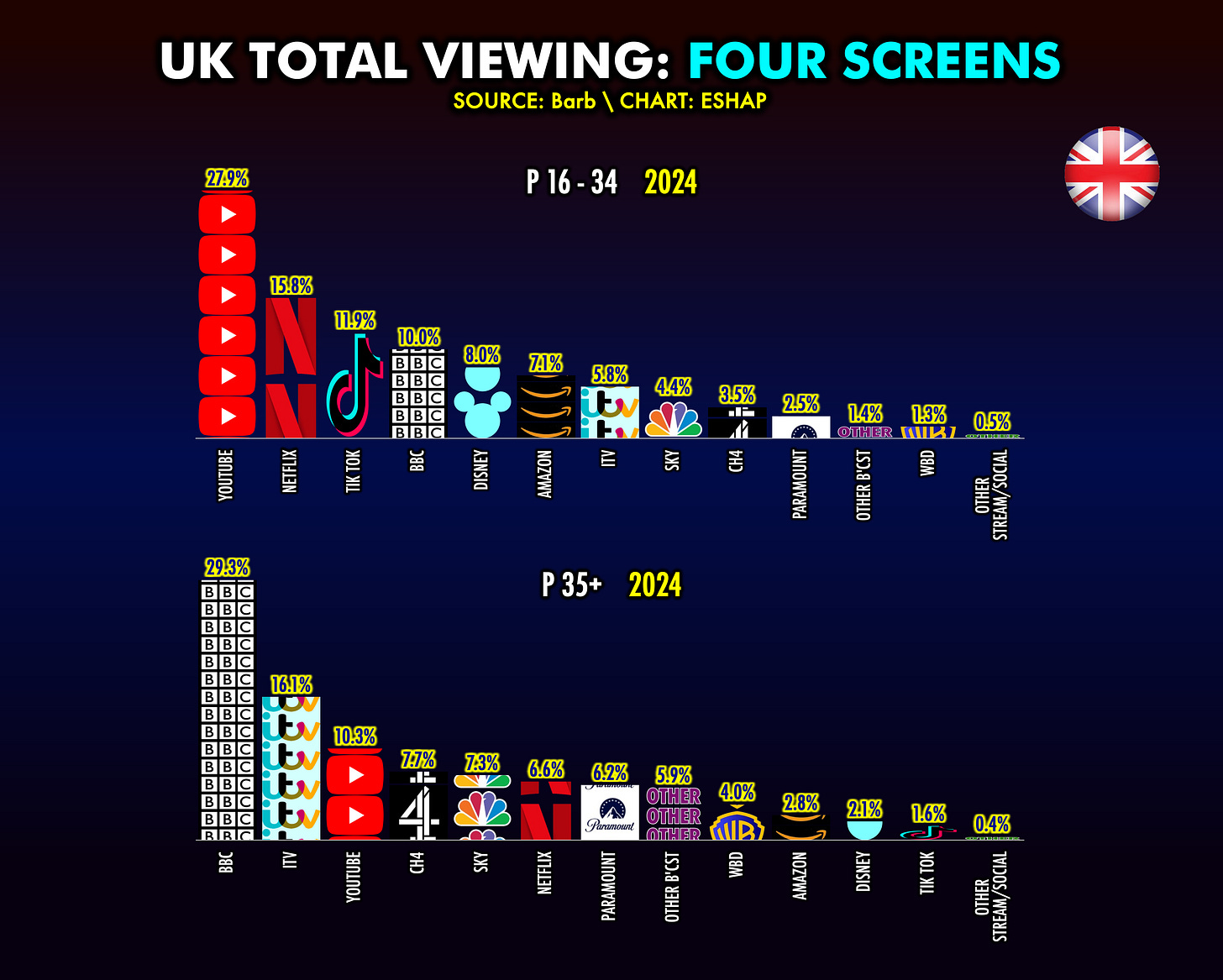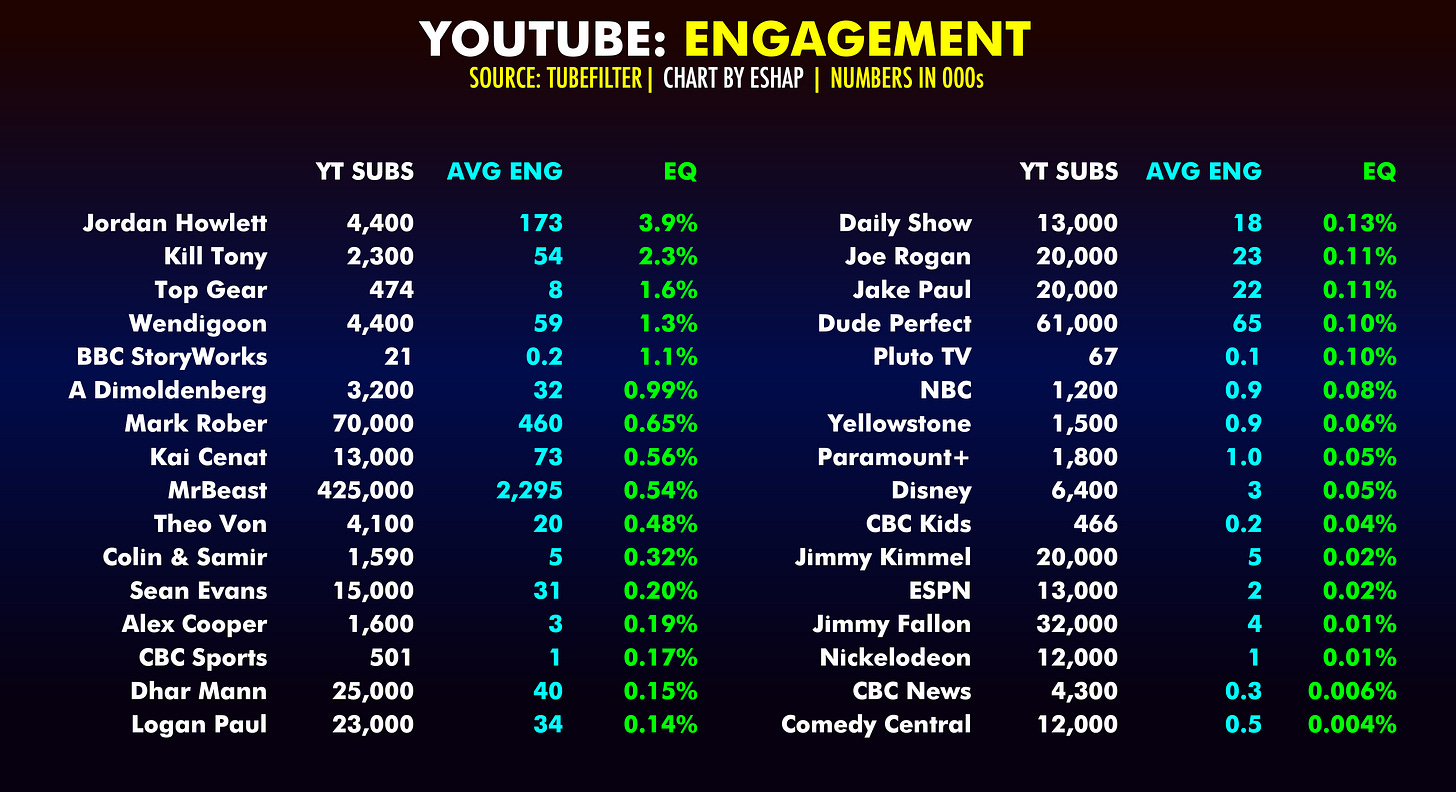Happy Monday Peaceniks. Ready to Broadcast?
Since Thursday, I’ve been in Amsterdam (one of my most favorite cities) for IBC - the International Broadcasting Conference. It’s a great event, where the tech and content of television collide, and where the people who run our global TV business meet, in real life, beyond the borders of our regions and zoom calls, to discuss where the medium is going.
Two years ago, I spoke at IBC and announced that both I and Media had cancer. This year, I gave another speech - declaring that I was now cancer-free, but Media… not so much.
The difference? I took my medicine. Big Media, despite many warnings, did not. Over the last five years, Big Media has stagnated. Over the last two years it has reached critical condition.
It does not have to be that way. If Big Media listens to the data - to the voice of its own audience - the cure for what ails it may not be easy to take, but it is incredibly obvious.
One glaring, major problem sits at the very center of IBC: Its middle name is literally BROADCASTING - a technological protocol and a curation format entirely rooted in Media’s past. All traditional TV players now have streaming apps - BBC and SVT for example were true innovators in streaming. Yet nearly all those in television (particularly the generation of leaders atop the industry) share the dogmatic belief that the art and business of television are still cemented in the outmoded concept Broadcast.
The great irony? When media traditionalists think about “Broadcast,” they mean a business model - not its intended meaning.
broadcast | transitive verb
1: to scatter over a broad area; 2. to make widely known
Perhaps they do know the original definition of the term and feel that they are, in fact, sending their content widely to everyone who wants it. If so, they could not be more wrong. Unfortunately, for the most part, even the most digital of TV players remain locked into a traditional view of TV as a top-down, gatekeeper-run, Ivory-Tower-operated art-form.
I recently asked a local Broadcast company with numerous FAST channels if they take post their local news on YouTube at the same time as TV - or ever. They said no. I asked why. Their verbatim answer: “I dunno.” When asked if he feared YouTube as competition, Ted Sarandos, CEO of digital marvel Netflix, blurted “YouTube is for wasting time, it’s not TV.”
Precious few of our industry “leaders” seem to understand that 70% of the world population are now Millennials or younger - that all Millennials and most of Gen Z are no longer children, but rather full grown adults, with jobs, homes, families, and substantial consumer power.
The linear-thinking, geriatric C-Suites cannot comprehend that these generations, who grew up on Social Media, live in an entirely different world. Critically, for the business of “TV,” Gen A, Gen Z, and Millennials consume Media in an entirely different ecosystem than those in control of television; one where the audience wields Big Tech sevices to curate and control their own entertainment carousels and where the viewers, not the gatekeepers, define what makes content “premium.”
Nothing personifies this shift more perfectly than the current state of American Television, where YouTube is TV’s biggest channel, with a larger share of TV time than all of Disney (or NBCU, or WBD, or Paramount) combined - and is poised to overtake the entire US Broadcast ecosystem at some point next year (and all of pay TV shortly thereafter).
What’s more, with Millennials turning 45 and Gen Z turning 30, their Media habits are becoming the majority use-case. Case in point: More people on earth now get their news from Social Media than any other source.
Everywhere you look, this generational divide in Media is clear and present.
You can see the chasm on US Pay TV - with the biggest drop-off coming at the top edge of the Millennial age range. Despite deflections by the British Media elite, TV’s Generation Gap is also crystal clear across UK homes.
During my second speech at IBC, I also shared data from, Spain, Australia, and beyond, which quadrupled down on the proof of this growing generational gap. Even my 30 year old Amsterdamian uber driver (on my way home from late night/early morning Karaoke) informed me that neither he, his wife, nor his three kids ever watch traditional TV, not even the national Public Broadcaster, but rather exclusively watched YouTube - on their phones and tablets, but more often than not, on their TVs. He didn’t really understand, nor care, what “broadcasting” meant.
(Me ☝️ belting Careless Whisper)
When we were out to dinner, and deep into drinks, even the most stalwart TV tech execs admitted that they spend more time on social media than watching TV, that even when audiences do turn to more traditional media like premium streaming, broadcast television, or movies, they almost always hear about what to see or watch on social platforms like Instagram, TikTok, and increasingly on creator platforms like podcasts and newsletters (like this one!).
Yet, when you ask the Media powers that be, they tell you with bloated confidence that “once Millennials and Gen Z grow up, own homes, and have kids, they’ll return to more traditional TV” as if their version of television is akin to developing a taste for coffee or olives. Often I hear things like “YouTube is not TV. It’s not premium. It won’t ever be.” In every case when tested, their theories are never based on data, just their feels.
This thinking is the equivalent of a cancer patient with a pack a day filterless cigarette habit. Look at the chart above. MILLENNIALS AND GEN Z ARE GROWN UPS. In less than five years, Gen A will be too. And, collectively, religiously, they love the infinite, persistently personalized platforms of Creator platforms - so much so, that more than one quarter of them now PAY for premium versions of Social Media.
Much to the navel-gazing obliviousness of Big Media’s most powerful people, that LOVE is the Key Performance Indicator of Media’s new business model - what I call The Affinity Economy - the melded mode of content consumption that blends social and traditional Media into one, single, self-curated feed, emanating from whichever glass screen consumers have on at any moment. And to those (and there are many) who say you can’t measure Love, I call bullshit.
To the 70% of the world born into our three youngest generations, MrBeast isn’t on YouTube or Amazon, he’s just on; Alex Cooper, Sean Evans, and Amelia Dimoldenberg aren’t podcasters, YouTubers, or influencers - they’re talk show hosts. To Gen A, Bluey isn’t a TV show, she’s a friend, who shows up wherever, whenever they want her to. These personalities and IP don’t have audiences, they have FANS. They are the center of passionate, dedicated communities - who don’t just watch, but also share, show up, and literally wear their loyalty on their sleeves and across their chests.
These generations aren’t just powering this emerging and powerful Affinity Economy, they’re spreading it like wildfire across the culture. The fastest growing audience for YouTube on TV are now people over 55.
Traditional Media and the Creator Economy are no longer thick-walled silos in direct competition - consumers have frankensteined them into one, enormous, interactive universe of fandom, where stars can emerge from anywhere and successful content will live everywhere - despite the protestations and of Broadcasters who insist they can only speak to their audiences effectively on their owned and operated properties. The greatest fear of the Media Elite has come absolutely true - they are no longer in control. The audiences - the Fans - are.
What’s most fascinating about TV’s brave new world: When Big Media lower their noses, drop their pretenses, and embrace this new reality, they totally crush it.
Keep reading with a 7-day free trial
Subscribe to Media War & Peace to keep reading this post and get 7 days of free access to the full post archives.



